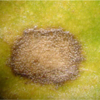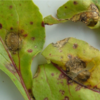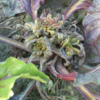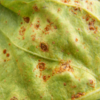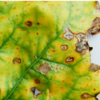
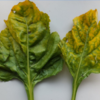
Virus yellows complex
Virus yellows complex (VYC) describes a disease caused by members...
Virus yellows complex (VYC) describes a disease caused by members of the Polerovirus genus. This includes beet chlorosis virus (BChV), beet mild yellowing virus (BMYV) and potentially beet western yellows virus. Other viruses within this group may also be involved and mixed infections are common. Virus yellows complex commonly occurs on beet in NZ. Secondary fungal infections particularly by Alternaria and Stemphylium are often associated with these viruses.



